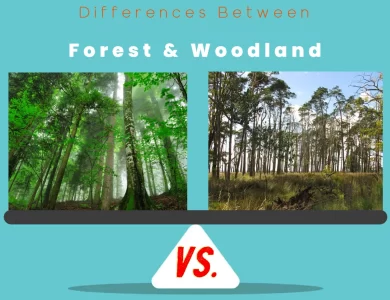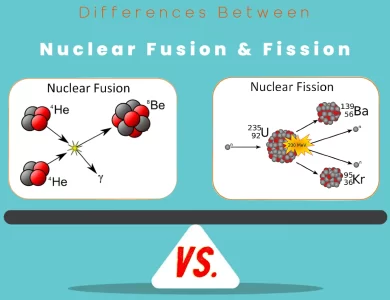-
Philosophy Education

Cultural Change vs Social Change
In the ever-evolving tapestry of human society, two prominent threads weave their way through our lives - Social Change and Cultural Change. These concepts are often used interchangeably, but they're not quite the same. Let's embark on a journey to unravel the key differences between Social Change and Cultural Change, exploring their unique features, impacts, and the intricate ways in which they shape our world. Social Change refers to alterations in the structure, behavior, and interactions within a society over time. It involves modifications in social institutions, norms, values, and relationships. Social Change can manifest through shifts in policies, laws, demographics, and societal attitudes. These changes can be gradual or rapid and may result from various factors such as technological advancements, economic transformations, political movements, or cultural shifts. Cultural Change, on the other hand, pertains to transformations in the shared beliefs, customs, traditions, and expressions of a particular group or society. It encompasses changes in art, language, religion, rituals, and other aspects of culture. Cultural Change can occur through innovation, diffusion of ideas, contact with other cultures, or generational shifts. It shapes the way people perceive and engage with the world, influencing their values and behaviors.
-
Philosophy Education

Constructionism vs Constructivism
In the realm of education, two prominent theories, Constructivism and Constructionism, often emerge as compelling approaches to learning. While their names may sound similar, these theories have distinct philosophies and implications for teaching and learning. Constructivism is a theory that posits learners actively construct their knowledge by engaging with their environment and prior experiences. It traces its roots to renowned psychologists Jean Piaget and Lev Vygotsky. Constructivism emphasizes the importance of social interaction, prior knowledge integration, and the progressive development of cognitive skills. In constructivist classrooms, teachers often transition from traditional instructors to facilitators, encouraging discussions, critical thinking, and reflection among students. Constructionism, an extension of Constructivism, was developed by Seymour Papert and colleagues at MIT. This theory takes an even more hands-on approach, emphasizing project-based learning, personal meaning-making, and often, the integration of technology. In constructionist environments, learners actively create tangible artifacts or digital projects, fostering creativity and practical skills. Teachers in constructionist settings become mentors, guiding students in project development and technical aspects. Understanding the differences between Constructivism and Constructionism is crucial for educators and learners alike. By recognizing their unique principles and approaches, individuals can make informed decisions about which theory aligns best with their teaching goals and the learning experiences they seek to create.
-
Personalities

Nehru vs Gandhi
In the annals of India's history, Mahatma Gandhi and Jawaharlal Nehru stand as towering figures, each leaving an indelible mark on the nation's path to independence and development. Their differences in ideologies, strategies, and visions for India's future have been subjects of admiration and debate. Gandhi, with his unwavering commitment to non-violence and simplicity, advocated for a morally transformed society where the marginalized found justice. In contrast, Nehru, as India's first Prime Minister, championed modernization, secularism, and scientific progress as the means to uplift the nation. Gandhi's leadership was characterized by his moral authority and personal sacrifices, while Nehru's leadership reflected formal political roles and diplomatic finesse. Gandhi's influence transcended borders, inspiring civil rights movements worldwide, while Nehru's policies laid the groundwork for India's economic and technological advancements. In this exploration of the differences between Gandhi and Nehru, we navigate through their philosophical disparities, their approaches to social reform and foreign policy, and their lasting legacies. These two remarkable leaders, while distinct in their outlook, played complementary roles in shaping India's diverse and dynamic narrative, leaving a profound impact on the nation and the world at large.
-
Analytical Chemistry

Titre vs Dilution
In the realm of laboratory science, precision and accuracy reign supreme, and two fundamental techniques, dilution and titration, stand as pillars of analytical prowess. These methods, though related to the handling of solutions, serve vastly different purposes and involve distinct processes. Dilution, like a gentle brushstroke on a canvas, is the art of reducing the concentration of a solution by introducing a solvent. It is used to tailor solutions for various reasons, including safety, precision, and cost-efficiency. The process relies on mathematical calculations, making it a straightforward and essential technique in fields such as pharmaceuticals, chemical analysis, and biological research. In contrast, titration is akin to a scientific detective's quest for answers. It is a meticulously controlled chemical reaction between an analyte of unknown concentration and a titrant of known concentration. The key to titration lies in the precise detection of the endpoint, often signaled by a dramatic change in color due to the use of indicators. This technique is paramount in analytical chemistry, enabling scientists to unravel the mysteries of unknown concentrations and ensure product quality control in the pharmaceutical industry.
-
Disasters

Intensity vs Earthquake Magnitude
Earthquakes, those awe-inspiring geological phenomena, have intrigued humankind for centuries. To comprehend and prepare for these natural events, one must grasp the pivotal differences between two essential concepts: earthquake magnitude and intensity. While these terms may appear interchangeable at first glance, they represent distinct aspects of an earthquake's nature and consequences. Earthquake Magnitude, often expressed on the Richter scale or moment magnitude scale (Mw), quantifies the energy released at the earthquake's epicenter. It serves as a numeric indicator of an earthquake's sheer power, providing scientists and engineers with valuable data for seismic research and structural design. Earthquake Intensity, measured using the Modified Mercalli Intensity (MMI) scale, diverges from magnitude by focusing on the effects of an earthquake at specific locations. It tells the story of how the ground shakes, structures sway, and people experience the event. This qualitative measure informs emergency response efforts and helps communities prepare for seismic challenges. In our quest to understand these distinctions, we unravel the mysteries behind earthquake magnitude and intensity, exploring their unique roles in assessing seismic hazards, engineering resilient structures, and ensuring public safety. Join us in this enlightening journey to become more earthquake-savvy and prepared.
-
Disasters

Flash Flood vs Flood
In the world of natural disasters, floods and flash floods stand as formidable forces of nature. While they both involve water inundation, their differences are crucial to understand for preparedness and safety. Floods, characterized by their gradual onset, typically develop over hours to days. They result from various factors such as heavy rainfall, snowmelt, river overflow, or dam failures. Floods can affect extensive regions, causing property damage, economic losses, and displacing residents. Their predictability allows for advance warnings, enabling communities to prepare and respond. In stark contrast, flash floods strike suddenly and swiftly, often within minutes to hours of intense rainfall, usually associated with thunderstorms. These events are highly localized, impacting specific areas or communities. Flash floods are notorious for their limited warning time, making them exceptionally dangerous. Their rapid onset can lead to property destruction, loss of life, and environmental disturbances.
-
Nature

Woodland vs Forest
When venturing into the great outdoors, you might find yourself facing a delightful dilemma: should you explore the depths of a vast forest or meander through the serene beauty of a woodland? While both are enchanting natural landscapes, each possesses its own unique characteristics that set them apart. Forests, with their towering trees, expansive canopies, and lush undergrowth, create a sense of grandeur and solitude. They cover vast areas, often stretching over thousands of square kilometers, and are known for their high tree density. Forests are biodiversity hotspots, hosting a diverse range of species, including iconic wildlife like bears, deer, and various bird species. Moreover, they play a crucial role in climate regulation by sequestering carbon dioxide, making them essential for mitigating climate change. On the other hand, woodlands offer a more intimate and relaxed atmosphere. They are smaller in size and have a lower tree density compared to forests, allowing sunlight to filter through the scattered trees. Woodlands are often associated with temperate climates and have more variable weather conditions. These environments support a variety of wildlife, including foxes, rabbits, and songbirds. Woodlands are ideal for leisurely activities like picnicking and nature walks, offering a peaceful setting for those seeking a tranquil escape.
-
Disasters

Bianca vs Alby
Cyclones are awe-inspiring natural phenomena, but each has its own story to tell. In the southern hemisphere, two notable cyclones, Alby and Bianca, took center stage, showcasing their unique characteristics and effects. Understanding their differences is not just a meteorological curiosity; it's crucial for those residing in cyclone-prone regions. Cyclone Alby originated in the Indian Ocean, while Cyclone Bianca formed in the South Pacific Ocean. Their paths diverged as Alby moved southeastward, affecting Indonesia and Western Australia, while Bianca ventured south-southeast, primarily remaining over open waters. One of the most significant disparities lies in their intensities. Alby reached Category 4 on the cyclone intensity scale, boasting winds of 131-155 mph. In contrast, Bianca peaked at Category 3 with winds ranging from 96-110 mph. These differences translated into varying impacts on land. Alby's larger size and path caused significant damage and flooding, especially in Western Australia. On the other hand, Bianca, although powerful, had a limited direct impact on land, primarily influencing maritime activities.
-
Inorganic Chemistry

Fission vs Nuclear Fusion
Nuclear energy, with its vast potential and diverse applications, is a topic of immense significance in the quest for clean and sustainable power sources. Two distinct nuclear processes, fusion, and fission, stand at the forefront of this scientific exploration. Understanding the fundamental disparities between these processes is pivotal in unraveling their unique attributes and contributions to the energy landscape. Nuclear fusion, often hailed as the "holy grail" of clean energy, involves the fusion of light atomic nuclei, typically hydrogen isotopes, to form a heavier nucleus. This fusion process mirrors the energy generation mechanism of stars, releasing an extraordinary amount of energy. In contrast, nuclear fission revolves around the splitting of heavy atomic nuclei, like uranium or plutonium, into smaller nuclei, accompanied by the release of substantial energy. Both processes are awe-inspiring in their own right, but they diverge significantly in terms of fuel, energy release, waste generation, and safety. Fusion is characterized by its minimal waste production, low radioactivity, and an almost boundless fuel supply derived from hydrogen isotopes, making it an attractive prospect for a sustainable energy future. Moreover, fusion carries no risk of a nuclear meltdown, enhancing its safety profile. However, it demands the creation and maintenance of extreme conditions, including temperatures in the millions of degrees, which remain a formidable technical challenge. In contrast, fission reactors, which are already operational worldwide, provide a substantial portion of our current energy needs. Yet, they generate significant amounts of radioactive waste, pose safety concerns, and rely on limited fissile materials.
-
Professions People

Stenographer vs Writer
When it comes to career choices, the decision between becoming a writer or a stenographer can be a defining one. These two professions, though centered around language and communication, diverge in their core functions, educational backgrounds, and work environments. Writers, the wordsmiths of the literary world, wield the power of creativity, storytelling, and diverse writing styles. They craft captivating narratives, pen informative articles, and even embark on novel-writing journeys. The path of a writer is often marked by a flexible blend of formal education and self-driven passion for words. On the flip side, stenographers are the silent heroes of precision and transcription. They specialize in capturing spoken words with meticulous accuracy, making them indispensable in legal proceedings, courtrooms, and other structured settings. To become a stenographer, one must embark on a more structured educational journey, mastering shorthand writing and transcription technology. This excerpt is just a glimpse into the fascinating world of differences that separate these two professions. For a comprehensive understanding of the distinctions, from salary prospects to future trends, delve deeper into our exploration of Writer vs. Stenographer.










